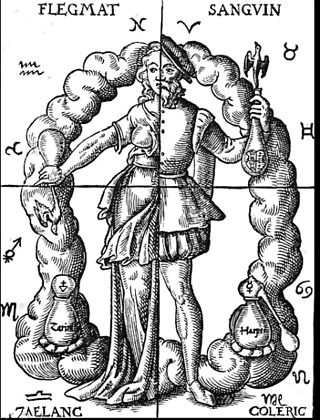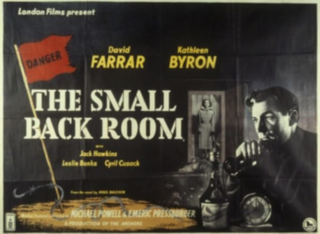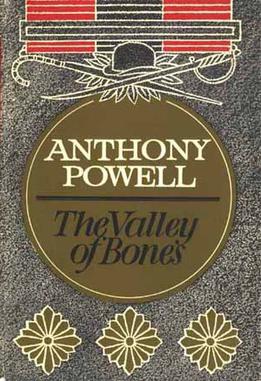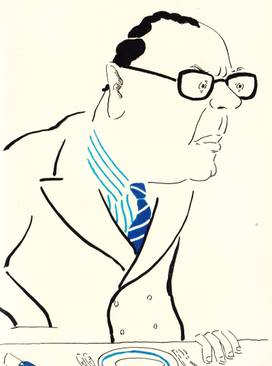
Melancholia or melancholy is a concept found throughout ancient, medieval, and premodern medicine in Europe that describes a condition characterized by markedly depressed mood, bodily complaints, and sometimes hallucinations and delusions.

Barchester Towers is a novel by English author Anthony Trollope published by Longmans in 1857. It is the second book in the Chronicles of Barsetshire series, preceded by The Warden and followed by Doctor Thorne. Among other things it satirises the antipathy in the Church of England between High Church and Evangelical adherents. Trollope began writing this book in 1855. He wrote constantly and made himself a writing-desk so he could continue writing while travelling by train. "Pray know that when a man begins writing a book he never gives over", he wrote in a letter during this period. "The evil with which he is beset is as inveterate as drinking – as exciting as gambling".

Robert Burton was an English author and fellow of Oxford University, known for his encyclopedic The Anatomy of Melancholy.

The Anatomy of Melancholy is a book by Robert Burton, first published in 1621, but republished five more times over the next seventeen years with massive alterations and expansions.

Anthony Dymoke Powell was an English novelist best known for his 12-volume work A Dance to the Music of Time, published between 1951 and 1975. It is on the list of longest novels in English.

The Life and Opinions of Tristram Shandy, Gentleman, also known as Tristram Shandy, is a novel by Laurence Sterne. It was published in nine volumes, the first two appearing in 1759, and seven others following over the next seven years. It purports to be a biography of the eponymous character. Its style is marked by digression, double entendre, and graphic devices. The first edition was printed by Ann Ward on Coney Street, York.

Humorism, the humoral theory, or humoralism, was a system of medicine detailing a supposed makeup and workings of the human body, adopted by Ancient Greek and Roman physicians and philosophers.

Bright Young Things is a 2003 British drama film written and directed by Stephen Fry. The screenplay, based on the 1930 novel Vile Bodies by Evelyn Waugh, provides satirical social commentary about the Bright Young People—young and carefree London aristocrats and bohemians—as well as society in general, in the interwar era.

Evelina, or the History of a Young Lady's Entrance into the World is a novel written by English author Fanny Burney and first published in 1778. Although published anonymously, its authorship was revealed by the poet George Huddesford in what Burney called a "vile poem".

Brian Christian de Claiborne Howard was an English poet and later a writer for the New Statesman.

The Small Back Room is a 1949 film by the British producer-writer-director team of Michael Powell and Emeric Pressburger starring David Farrar and Kathleen Byron and featuring Jack Hawkins and Cyril Cusack. It was based on the 1943 novel of the same name by Nigel Balchin.

Plum Bun: A Novel Without a Moral is a novel by Jessie Redmon Fauset first published in 1928. Written by an African-American woman who, during the 1920s, was the literary editor of The Crisis, it is often seen as an important contribution to the Harlem Renaissance.

At Lady Molly's is the fourth volume in Anthony Powell's twelve-novel sequence, A Dance to the Music of Time. Winner of the James Tait Black Memorial Prize 1957, At Lady Molly's is set in England of the mid-1930s and is essentially a comedy of manners, but in the background, the rise of Hitler and of worldwide Fascism are not ignored. The driving theme of At Lady Molly's is married life; marriages – as practised or mooted – among the narrator's acquaintances in bohemian society and the landed classes are pondered. Meanwhile, the career moves of various characters are advanced, checked or put on hold.

Bernard Jocelyn Brooke was an English writer and naturalist. He wrote several unique, semi-autobiographical novels, as well as some poetry. His most famous works include the Orchid Trilogy—The Military Orchid (1948), A Mine of Serpents (1949), and The Goose Cathedral (1950)—and The Image of a Drawn Sword (1950).
Monster Blood Tattoo is a children's/young adult's high fantasy trilogy written by Australian author D. M. Cornish. It tells the story of Rossamünd, a boy unfortunately christened with a girl's name, who has lived his entire life in a foundlingery before he is chosen to become a lamplighter in a far away city. The book's action takes place entirely on the Half-Continent, a Dickensian world run by arcane science and alchemy, and plagued with deadly monsters. The books are notable for the extraordinary amount of constructed language which pervades the entire narrative; an extensive glossary of terms is provided, as an in-universe document "The Explicarium".

The Valley of Bones is the seventh novel in Anthony Powell's twelve-volume series A Dance to the Music of Time. Published in 1964, it is the first of the war trilogy.

Hearing Secret Harmonies is the final novel in Anthony Powell's twelve-volume series, A Dance to the Music of Time. It was published in 1975, twenty-four years after the first book, A Question of Upbringing, appeared in 1951. No other novel series is based on the formal pictorial principles as A Dance to the Music of Time. The book ends with a torrential passage from The Anatomy of Melancholy by Robert Burton.

Kenneth Widmerpool is a fictional character in Anthony Powell's novel sequence A Dance to the Music of Time, a 12-volume account of upper-class and bohemian life in Britain between 1920 and 1970. Regarded by critics as one of the more memorable characters of 20th century fiction, Widmerpool is the antithesis of the sequence's narrator-hero Nicholas Jenkins. Initially presented as a comic, even pathetic figure, he becomes increasingly formidable, powerful and ultimately sinister as the novels progress. He is successful in business, in the army and in politics, and is awarded a life peerage. His only sphere of failure is his relationships with women, exemplified by his disastrous marriage to Pamela Flitton. The sequence ends with Widmerpool's downfall and death, in circumstances arising from his involvement with a New Age-type cult.

The Bright Young Things, or Bright Young People, was a term given by the tabloid press to a group of Bohemian young aristocrats and socialites in 1920s London. They threw flamboyant fancy dress parties, went on elaborate treasure hunts through nighttime London, and some drank heavily or used illicit drugs — all of which was enthusiastically covered by journalists such as Charles Graves and Tom Driberg.

The Bennet family is a fictional family created by the English novelist Jane Austen in her 1813 novel Pride and Prejudice. The family consists of Mr and Mrs Bennet and their five daughters: Jane, Mary, Catherine, Lydia, and Elizabeth, who is the novel's protagonist.



















